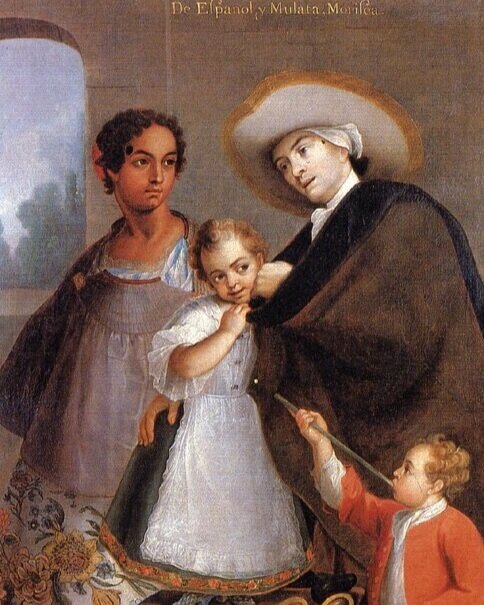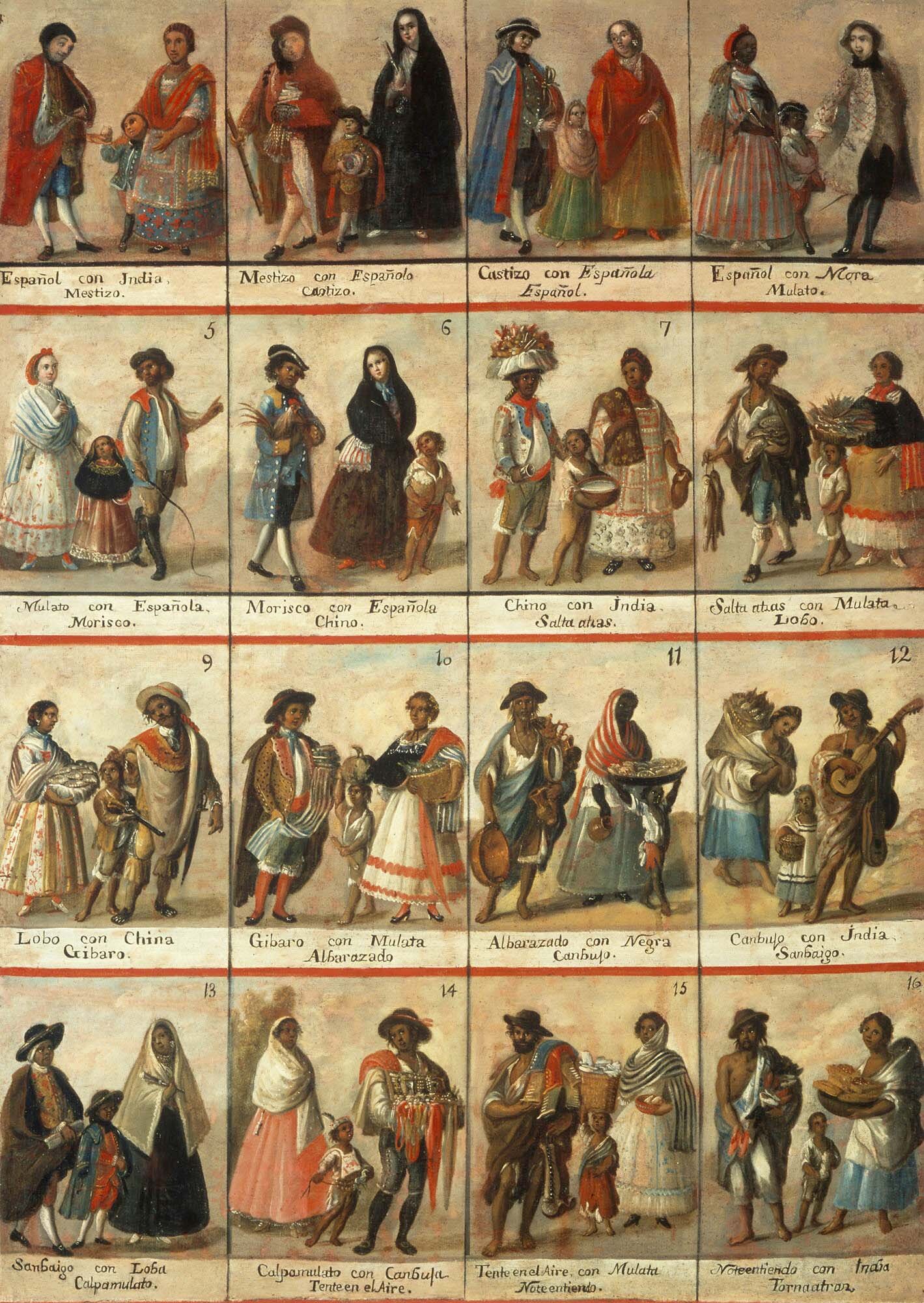“Casta paintings can help us understand the historical underpinning of many notions that persist to this day. In this sense, it is essential to view them within the specificity of their own historical and artistic context, keeping in mind their contradictions and complexity.” — Ilona Katzew, Curator of Latin American Art, LACMA
Background
In Colonial times, Latin America was inhabited by Indigenous People, Spaniards, and Africans. Unlike in North America, race-mixing, or “miscegenation,” was a common practice throughout the Spanish and Portuguese colonies.
In the 1700s & 1800s, art in Latin America often featured mixed-race families. At first glance, they appear to portray harmonious family life. However, these paintings served a distinctive hierarchal social purpose.
Español (Spaniard) + Negra (black women), Mulata by Miguel Cabrera. Mexico 1763. The painting shows a white man, described by the artist as a Spaniard, holding a young mixed child. The child is wearing a dress and holding fruit in one hand. A black woman wearing a black head covering is depicted next to them holding a basket of goods. Creative Commons.
Take Casta art for example.
In Mexico, “Casta” artworks were a series of 16 paintings or panels that portrayed interracial families. Each painting was labeled with numbers and textual inscriptions documenting the “mixing” that occurred between Black, Indigenous & Spanish.
Las Castas, Unknown Author, Public domain, via Wikimedia Commons. Casta painting showing 16 racial groupings. Anonymous, 18th century, oil on canvas, 148×104 cm, Museo Nacional del Virreinato, Tepotzotlán, Mexico. There are 4 rows of paintings. Each painting shows a man, woman, and child wearing different garments. Every person has a different skin tone.
The real stories they tell.
These artworks portray a racial taxonomy from the most “superior” pure European families to the least pure – Black families. The latter were often portrayed as disgruntled and downtrodden.
De español y mulata, morisca. Miguel Cabrera, Public domain via Wikimedia Commons. 1763, oil on canvas, 136×105 cm, private collection. Painting features a mixed mother of African decent looking toward a white Spanish man, presumably her husband, and their young son and daughter.
About “The Redemption of Ham” in Brazil.
In Brazil, Modesto Brocos y Gómez’s infamous paingint “The Redemption of Ham” features a Black grandmother praising God that her grandson is white as she stands over his mixed-race mother and White father.
A Redenção de Cam. Modesto Brocos y Gómez, Public domain, via Wikimedia Commons. An oil painting with the image of a black grandmother standing next to a lighter-skinned, sitting mother who is holding her child on her lap. The grandmother is looking up at the sky with her hands raised. Next to the mother, you see a seated white man, presumably the father, sitting with his legs crossed.
This is called blanqueamiento.
While Europeans mixing with people of African decent was viewed as a “decline” in purity, blanqueamiento – the gradual “whitening” of certain races through mixing – became a popular racist ideal in places like Brazil.
What these artworks tell us.
These paintings bring to light the origin of racial thought of the modern world, as well as notions and belief systems that were passed on through civilization and that play a huge role in our system to this day.
Paragraph







